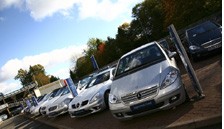With the past two years having bucked every established trend the beginning of 2010 will be an uncertain time.
The year starts against one inescapable backdrop – ongoing recession and a used car market that looks overheated and therefore vulnerable to further downward correction.
Analysis by CAP during 2009 suggests that if historical used car pricing trends can be relied on at all, then the market does remain unsustainably high.
This is most easily seen in the case of 4x4s which outperformed other sectors.
Retail customers seem to have forgotten that these vehicles are going to become increasingly expensive to own.
Fuel prices may have stabilised, but when the long-term trend is taken into account, rises are the only safe bet. And with Government increasingly wrapping motor-related taxation in a green cloak this April’s further hikes in VED prices will certainly not mark an end to charging heavy CO2 vehicles more than everything else on the road.
The belief at CAP is that 4x4s are now extremely vulnerable to downward pressure.
Another major driver for stability in values is new car market activity. Despite the benefits the used market enjoyed as a result of reduced production and the interruption to oversupply in 2009, it seems likely that commercial pressures on manufacturers mean this balance will be reversed.
One of the key factors which led to reduced supply was the withdrawal by a number of volume manufacturers from rental business.
But there are strong signs of a renewed appetite for significant rental deals. Another factor heavily influencing new car supply is the exchange rate.
This has made the costs associated with pushing into the UK market very expensive. The German scrappage scheme has also sucked in many new cars which might have been destined for the UK.
Any significant change in these dynamics is sure to be followed by the ramping up of new car supply into the UK.
The importance of this was demonstrated during the first quarter of last year, when Dealer Update revealed that a much-touted lack of volume was not in fact causing the apparent short-age of used stock.
CAP analysis of year-on-year supply volumes into the used market showed that the truth was more – not fewer – cars were being sold in the open trade market.
The shortage claims were misleading because the true dynamic was a major increase in demand rather than a reduction in supply.
If franchise dealers again have an abundance of late cars to sell and ex-rental supply grows to more familiar levels then used car values will again be under pressure.
Coupled with continued economic weakness in general, these factors signal a return to business as usual for those exposed to used car value risk during 2010.













Login to comment
Comments
No comments have been made yet.